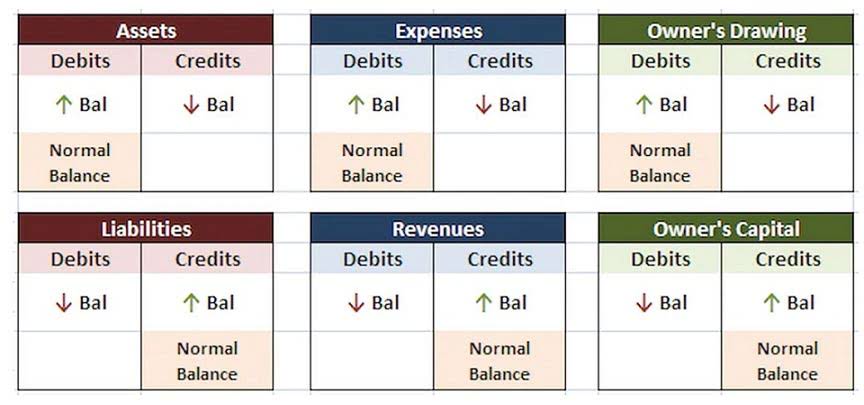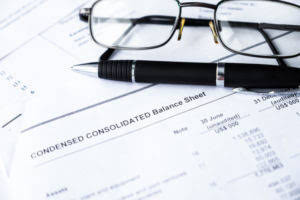
If you follow the cash-based method of accounting, you’ll only record revenue once the payment physically arrives in your company’s bank account. If a sale on credit turns out to be uncollectible, in the cash method there isn’t a need to cancel out the receivable with the bad debt expense. Allowance for bad debts is a contra-asset account, where a business records an estimated amount of receivables that they don’t expect to collect from customers. On the balance sheet, the allowance offsets the number of outstanding accounts receivable (which is then presented at their net realizable value).
More Transparent Lines of Communication With Customers
This transparency is essential for maintaining trust and making sound business decisions. Additionally, using reliable calculation methods helps align your practices with accounting standards, reducing the risk of financial discrepancies. By providing transparent and detailed information, companies enhance the reliability and comparability of their financial statements. This entry adjusts the allowance for doubtful accounts to the required level, ensuring that the financial statements accurately reflect the estimated uncollectible receivables. Yes, bad debt expense is generally tax-deductible, but there are specific rules and requirements from the IRS. To be deductible, the debt must be bad debt expense calculator considered a business bad debt, which is a loss from a debt created or acquired in a trade or business.
How to Write-off Bad Debts Using the Aging of Accounts Receivable Allowance Method
This method categorizes outstanding accounts receivable by age, such as 1-30 days or days. Different percentages of uncollectibility are applied to each age category, with older receivables assigned a higher percentage due to their increased likelihood of not being collected. When an account is deemed worthless, the business removes the uncollectible amount directly from its accounts receivable. For example, if a customer owes $500 and the company determines this amount will not be collected, the business debits Bad Debt Expense for $500 and credits Accounts Receivable for $500.
The Allowance Method Principles
Here, we’ll break down what bad debt expense is, how to calculate it, and how to protect your business from the risk of uncollectible accounts. In other words, businesses can’t afford to have poor bad debt expense management. When customers fail to pay what they owe, it doesn’t just impact collections. It ripples through your revenue stream, distorts cash flow projections, and threatens long-term financial stability. Sometimes, despite your best efforts, invoices go unpaid — and that’s where bad debt expense comes into play. In this article, you’ll learn how to calculate bad debt expense for your small business.

Wakefield Research and Versapay’s survey on the state of digitization in B2B finance reveals the extent of this disconnect. Eighty-five percent of c-level executives surveyed said miscommunication between their AR department and a customer has resulted in the customer not paying in full. Sandra Habiger is a Chartered Professional Accountant with a Bachelor’s Degree in Business Administration from the University of Washington. Sandra’s areas of focus include advising real estate agents, brokers, and investors. She supports small businesses in growing to their first six figures and beyond. Alongside her accounting practice, Sandra is a Money and Life Coach for women in business.
- Businesses may categorize receivables based on their age, with older balances generally posing a greater risk of uncollectibility.
- For businesses using the direct write-off method, the accounts receivable ledger is reduced for every invoice that’s been written off.
- With an automated bookkeeping service, preventative measures happen behind the scenes.
- A high bad debt ratio can indicate that a company’s credit and collections policies are too lax, or it may suggest that the company is having trouble collecting customer payments.
- When customers fail to pay what they owe, it doesn’t just impact collections.
- This training can lead to better decision-making and more accurate bad debt expense calculations.
You send a reminder, maybe make a phone call, and despite your best efforts, you can’t get the money you’re owed. Gain a clear financial picture by accurately accounting for funds unlikely to be collected. If the actual Bad Debt Expense differs from the estimated amount, you should adjust the Allowance for Doubtful Accounts and update your financial statements to reflect the difference. If one has the right set of tools, then one will be able to save hours of manual work and minimum human error and thus avoid big bad debt altogether. The amount debited to Bad Debt Expense and credited to Accounts Receivable is the full amount of the uncollectible receivable being written off.

Why do businesses calculate bad debt expenses?
The first method involves determining the bad debt rate by analyzing historical data. This rate is calculated by dividing the total bad debts by either the total credit sales or the total accounts receivable. Before diving into calculations, it’s essential to understand https://pastorjoseamaya.com/examples-of-profit-margin-in-a-sentence/ what bad debt expense is and why it matters. Bad debt expense is recorded on the income statement and reflects the estimated amount of receivables that are deemed uncollectible. This accounting measure helps businesses maintain realistic financial statements by acknowledging potential losses. Accurate calculations of bad debt expense enable businesses to plan better and make informed financial decisions.
Basically, for one reason or another, the customer isn’t going to fulfill their obligation to pay. Join the 50,000 accounts receivable balance sheet professionals already getting our insights, best practices, and stories every month. Automating these tasks frees your AR team to focus on executing more strategic, value-added work. Team members can focus their attention on uncovering the causes of payment delays and working with customers to better understand their needs. When the billing and payment experience isn’t optimized, overall customer experience suffers.

- This is recorded as a debit to the bad debt expense account and a credit to the allowance for doubtful accounts.
- When the billing and payment experience isn’t optimized, overall customer experience suffers.
- Suggest the accounting treatment to be done if the company follows the allowance method of recording bad debt expenses.
- For instance, 1% might be uncollectible for accounts 1-30 days old, while 10% might be uncollectible for accounts over 90 days old.
The IRS often considers qualifying bad debt expenses as business expenses and may let you deduct those outstanding invoices from your total taxable business income. The direct write-off method is best for business owners whose customers typically fulfill their credit payments. This means you only have a few bad debts and don’t have to keep track of dozens of unpaid or past due invoices. For example, the expected losses from bad debt are normally higher in the recession period than those during periods of good economic growth. Bad Debt Expense is reported on the income statement, typically as an operating expense, reducing the company’s net income. The Allowance for Doubtful Accounts is presented on the balance sheet as a direct reduction from gross accounts receivable.
